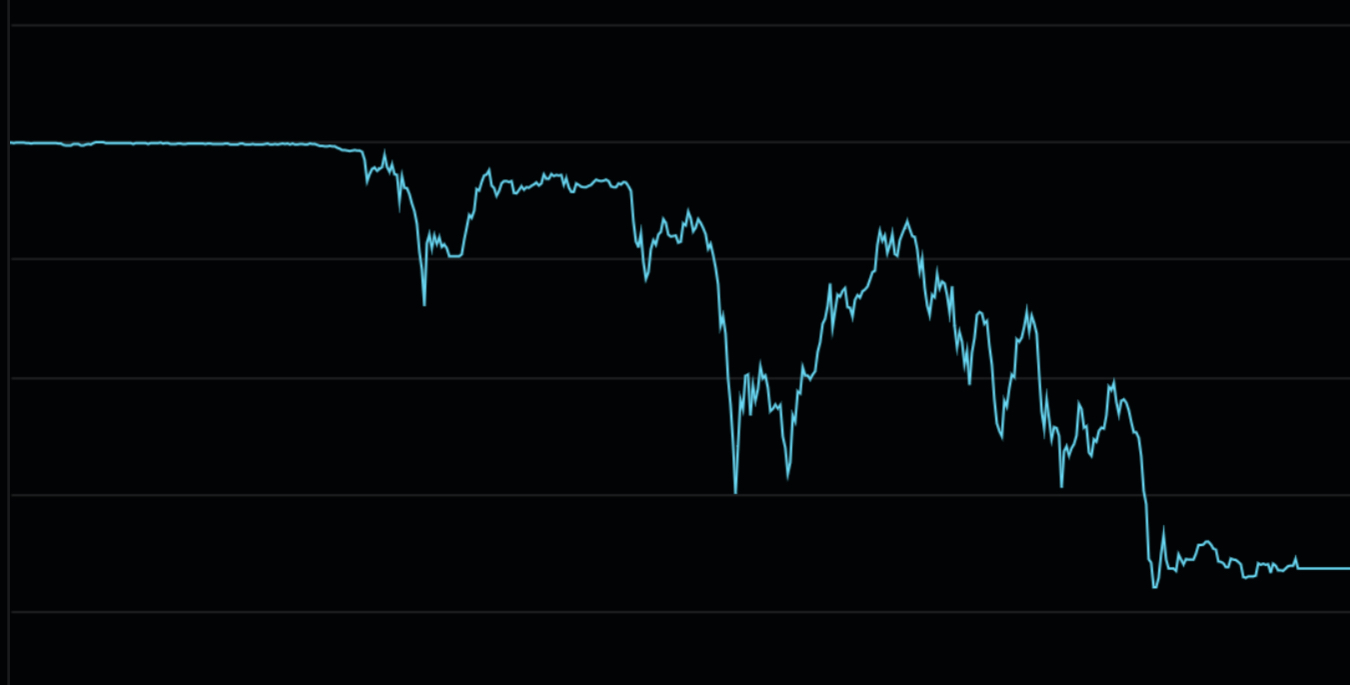Luna/UST Collapse: Are you feeling okay?
In the past 72 hours, investors in the cryptocurrency space have experienced one of the largest shockwaves throughout the history of cryptocurrency. Terra’s UST, one of the largest stable coin by market cap has lost its peg to the US Dollar and has failled to recover. It has also brought down Luna, the cryptocurrency that was supposed to help re-peg UST based on the algorithm design. The impact of this collapse has also affect many other cryptocurrencies as well.
If you have invested in UST to park it in Anchor Protocol for the luring 20% yield, I have one question for you.
Are you feeling okay?
Every week, I’ll be sharing practical tips and invaluable knowledge to guide you on your path to financial independence.
Losing my money when UST collapsed
If you have read my past article, “How I am adding cryptocurrencies into my savings and investments in 2022”, you would know that I have invested some money into the Anchor Protocol.
While I have 50% of my bond alternatives of my Core Portfolio in stable coins, I diversified them into a 50-50 split between USDC and UST. Therefore UST only accounted for 25% of my bond alternatives. While that sounded like it’s a lot of money, my Core Portfolio asset allocation consists of a 90/10 allocation between equities and bond alternatives so UST is only 2.5% of my Core Portfolio.
|
Investment |
Category |
Allocation |
|---|---|---|
|
ETFs |
Equities |
90% |
|
NetLink Trust |
Bond Alternatives |
5% |
|
USDC |
Bond Alternatives |
2.5% |
|
UST |
Bond Alternatives |
2.5% |
I also had some spare cash that I have set aside to contribute to my Supplementary Retirement Scheme account at the end of the year sitting in Anchor Protocol to earn some interest.
Eventually as I saw that Luna was plumetting below $0.50, the chances of UST recovering seem bleak as Terra Labs would need to raise a lot of money from VCs to re-peg UST to the US Dollar.
Looking from a VC’s perspective, I wouldn’t want to sink more money into Terra Labs because not only would it require a gigantic sum of money to cover the losses, the effort needed to recover the brand and trust of Terra Labs lost during the UST and Luna collapse would be almost impossible. There’s risk/reward ratio doesn’t align for me.
All that said, when I decided to cut my losses, I sold off all my UST for USDC at a big discount. I lost around US$4,200.
While the amount wasn’t small and the loss does hurt, I take comfort in knowing that this is money that I can afford to lose and my frugal spending habits would allow me to recover this amount before the end this year by saving a portion of my salary.
But I can definitely imagine the heartbreak and sorrow would multiply by many folds for someone who has poured in all their life savings, only to lose almost all of it within days.
Getting over the financial losses
Experts typically break grief down into 5 stages – denial, anger, bargaining, depression, and acceptance. I’m not going to elaborate the details on each stage but if you have not heard of these 5 stages, you can learn more about them here.
What you should know is that these stages are non-linear, and it’s possible to keep transitioning back and forth from the various stages. But where we ultimately want to get to, is to stay in the acceptance stage – to recognized your ability to survive the financial loss and find a way through.
For some, it may take a relatively short amount of time to reach and stay in the acceptance stage (I would like to think that I am fortunately one of them) but for some, it may take a much longer time.
And that’s okay.
Sometimes, it also helps to talk with trusted friends, family, or even a professional about your grief to transition across stages.

Re-evaluating the risks of stable coins
After this collapse, I think most of us would have recognised the need to re-evaluate the risks of how we use stable coins to generate yields, and whether it is still worth the risk to have them in our portfolios.
If you no longer feel safe putting your money into stable coins for yields, then you shouldn’t have any stable coins in your portfolio. It’s perfectly okay because there are so many other investment instruments out there and I’m sure some of them would suit your preferences,
Personally, I am still comfortable with having 5% of my portfolio allocated to stable coins to generate yields and intend to continue doing so. However, I will be looking at diversifying this 5% allocation among a few stable coins and split them in a few platforms/protocols to generate yields so that the risk is well-distributed, albeit with a lower blended return.
However, I will be keeping my emergency cash funds and cash savings in safe and regulated instruments that are capital protected so that similar incidents like the UST collapse would not impact my short term plans.
Final thoughts about investing
Like all things, we owe it to ourselves to do our own research and understand what we are putting our money into. Unless someone approached me with the intention to scam my money off me, I find it is ridiculous to blame others for my investment mistakes. Nobody placed a gun on my head and made me click on the ‘buy’ button.
I did my own research and made the decision to put my money in Anchor Protocol. It didn’t work out and I lost money. It’s my mistake and I owe it to myself to recoup my losses, be it through saving more money, earning more income, or investment gains.
Remember, there are more important things in life that are far beyond money.
With enough time and effort, you can and will get through this.


It’s not 2.5% of your entire portfolio, instead it’s 2.5% of the CORE portfolio (which is one third of the entire portfolio). 😀
Sure, I was only referring to my core portfolio in the entire post and will update the article to reflect that. If I look at it from the entire portfolio, yes it’d indeed be a lot smaller.